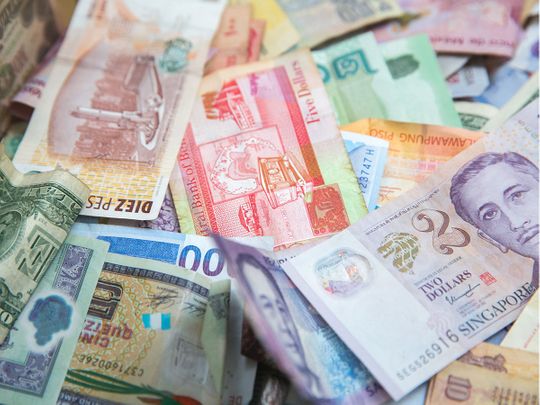
People have been using currencies for thousands of years, but never have bank notes been as smart, intricately designed and secure than they are today.
Click start to play today’s Spell It and find the “ruble” among other words.
Money was originally a form of receipt, representing grain stored in granaries. The first known form of currency is the Mesopotamian shekel, which emerged nearly 5,000 years ago. Ever since, cash and coins have exchanged hands for all sorts of goods and services.
Today, currencies around the world are upping their game – raised ink, intricate illustrations, and security codes are all part of what you might see on the note you’re holding in your hand. Here’s how it works in different countries:
1. Most difficult to counterfeit
Australian money is considered to be one of the world’s most advanced currencies. The notes are made from polymer and feel like wax. They’re not only fully waterproof but also notoriously difficult to counterfeit due to their complex design. The notes incorporate a visual rolling effect – for instance, the Australian $5 bill has an image of an eastern spinebill, a native bird, whose wings appear to move as you move the note.
2. Stumping ATMs
When China released new notes in 2015, its 100-yuan bills were so advanced that even the country’s ATM machines couldn’t read them at first. The government then released a statement saying the machines would need to be updated to recognise the new currency. The notes were accented with gold “100”s, and other intricate details that made them very difficult to counterfeit.
3. Canadian vertical notes
In March 2018, Canada unveiled a plan for a new $10 bill that would be vertically oriented and partially see-through. Made from polymer, with forgery-resistant security features, the currency is like no other.
4. Made for the visually impaired
The Israeli shekel is known for its colourful banknotes, but look closer, and they have a host of features that make it difficult to forge. For one, the governor’s signature that appears on the bills is written in raised ink, so it can be felt with your fingers, and is extremely hard to fake. The lengths of the notes also vary according to the denomination, in order to aid the visually impaired.
Did you know about these currencies? Play today’s Spell It and tell us at games@gulfnews.com.



